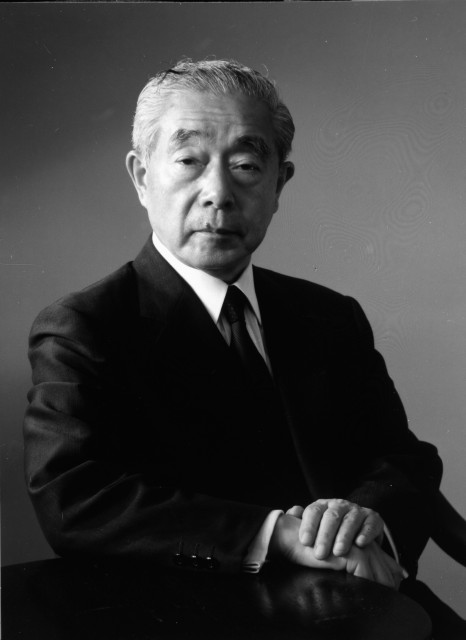Kenichi Fukui
1918-1998

Fukui was the co-recipient (with Roald Hoffmann, see portrait) of the 1981 Nobel Prize in Chemistry for "his frontier orbital theory of chemical reactivity". In 1954 Fukui published his theory that the site and rate of any reaction depends on the geometry and relative energies of the highest occupied molecular orbital (HOMO) of one reactant and the lowest unoccupied molecular orbital (LUMO) of the other.
He applied this method to a very wide variety of reactions and reactants, including aromatic substitution in benzenoid and heteroaromatic systems, additions to conjugated alkenes and others. Fukui's calculations gained increasing recognition among non-theoreticians as a consequence of the more pictorial orbital symmetry representations of Woodward and Hoffmann. Fukui's monograph "Theory of Orientation and Stereoselection" summarizes his work in this field.
Fukui was born in Nara, Japan, received the A.B. (1941) and Ph.D. (1948) in Chemical Engineering at Kyoto University and served as Professor there on the Faculty of Engineering, Department of Hydrocarbon Chemistry (1951-1982). He then became President of the Kyoto Institute of Technology (1982-88) and later the Director of the Institute for Fundamental Chemistry in Kyoto, an institute built specifically for him. In addition to his theoretical work, Fukui published over 450 papers in such diverse fields as reaction engineering and catalysis, statistical theory of gelation and the use of inorganic salts in organic synthesis. In 1988 he received the Imperial Honor of the Grand Cordon of the Order of the Rising Sun.
Sponsor: Peter J. Wagner
Location in chemistry building: Fourth Floor; West Wing South Wall; Sequence 3
Source: Professor Fukui